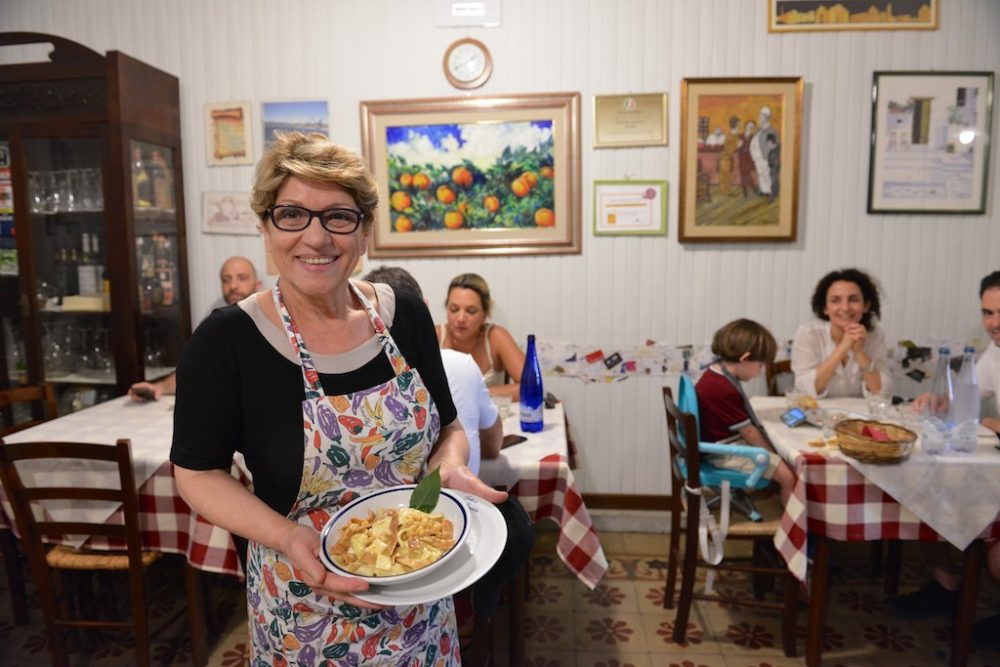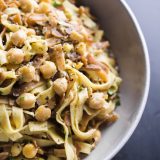It was a friend-of-a-friend-of-a-friend sort of suggestion. Go to Le Zie Trattoria in Lecce, an understated eatery where the menu of cucina povera offers an intimate introduction to the simple foods of Puglia, the slender heel of Italy’s boot. Of course, understated is an understatement. I’d walked past it several times before realizing I’d been in front of it all along.
I ring the doorbell—for the door is locked—and chef/owner Anna Carmela Perrone greets me and leads me through the rooms of the home-turned-restaurant—walls papered with maps, garage sale paintings, photos of celebrity guests and business cards. As I sit with the menu, Perrone returns to the tiny galley kitchen, really just a hallway off the dining room.
Her story is a bit muddled, tantalizingly so. The home once was a wine shop, and either before or after it was a restaurant owned by three sisters, two of whom were “spinsters” known about town as “Auntie.” “Let’s go to the Aunties’ restaurant” apparently was a common saying in the day. About 20 years ago, Perrone inherited it from a distant relative of somebody.

Whatever its lineage, Le Zie’s food lives up to the billing: a delicious tour through a sun- and olive oil-drenched region. Ciambotto, a summer vegetable stew as much about the oil as the produce. Parmigiana alle melanzane, a glistening stack of eggplant planks. Orecchiette dressed with tomatoes and olive oil. Creamy fava bean puree with tender, bitter chicory.
But the standout was the ciceri e tria, a simple tangle of broad strips of pasta paired with chickpeas. Except it wasn’t so simple. Half the pasta was the tender noodle we know. The other half was crisp, tan and crunchy, almost wonton-esque. The result was rich, creamy and unexpectedly textured—soft and crackling. The flavor of olive oil strong, but not heavy.
In the kitchen, the explanation became clear. Perrone cooks the pasta two ways—half of it in salted water, half fried in olive oil until crisp. Both then are tossed in a skillet with chickpeas and a bit of the starchy pasta cooking water, all of it simmering down to create a rich and textured—yet somehow weightless—sauce.
At Milk Street, this was a simple adaptation, mostly a matter of reducing the volume of oil needed to crisp the pasta and streamlining the method to make it a one-pot meal. Happily, we found the technique works as well with dried pasta as fresh. And we added lemon zest and juice, as well as a bit of parsley, to lighten and brighten the finished dish. A result as deliciously textured as Le Zie’s history.




